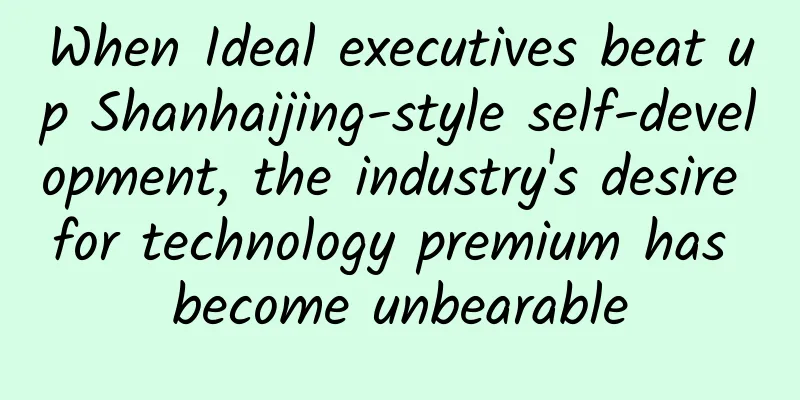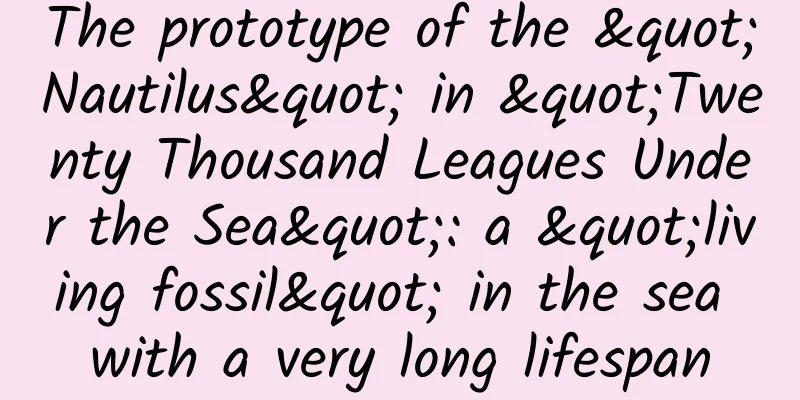When Ideal executives beat up Shanhaijing-style self-development, the industry's desire for technology premium has become unbearable

|
The day before yesterday, Ideal Auto executive “Old Tang Ge” Tango went on a rampage on Weibo, accidentally revealing a deep cognitive rift in China’s auto industry, or a soul-searching question – “Take someone else’s battery and chassis, give it a name from the Classic of Mountains and Seas, and dare to call it a technological breakthrough.” Although he didn't mention a word, it was already clear who Brother Tang was talking about. This seems to be a dispute over the naming of technology, but in fact it is a microcosm of the identity anxiety and value loss of China's automobile industry during its intelligent transformation. It also reflects the industry's impatient desire for technology premium. When Erguotou is diluted with water and becomes Imperial Jade Wine, the gathering of the elite is actually a meeting of carrots. The technical concepts are over-packaged and their sources are blurred and out of focus. The real needs of users are ignored first, and the consequence in the future is likely to be the collapse of trust. In the era of technological explosion, users' purchase costs have been greatly reduced, but the cost of selection has increased unprecedentedly. Various technologies with new terms are emerging, and there is a dazzling array of technologies. At this time, the belief that technology transparency is equal to value embodiment that manufacturers uphold is particularly necessary, the so-called duty. Users cannot all be professional, and their only judgment still comes from the various exaggerations of the media. Whether a product is good or not, it is easy to confuse people by putting on a hat woven with a new term. Therefore, when car companies label the results of suppliers as "self-developed", it is essentially depriving users of the right to know, which may eventually backfire on brand value. This also confirms the well-known business proposition that real competitiveness lies in underlying technological innovation, not superficial concept marketing. The Chinese auto industry is going through the "Great Navigation" era from "integration and assembly" to "ecological reconstruction". Products not only need to meet the needs of domestic users, but also go overseas and compete with the best products in the world. At this time, insisting on making technology transparent, saying goodbye to "mythical narratives", and returning to user value are things that manufacturers must face up to and actively return to in the current carnival. After all, foreign customers don’t care about your Classic of Mountains and Seas. Aluminum alloy wheels are just aluminum alloy wheels. If you come up with a Hot Wheels like the Third Prince, who would understand you? The essence of business has always been to solve user pain points. The basic needs of car users have never changed: safety, reliability and value for money (at the very least, value for money). In the era of technological inclusion, when choices become numerous and users' sense of sovereignty begins to awaken, the competitiveness of car companies does not lie in the "art of naming", but in whether they can be user-centric and transform technological breakthroughs into perceptible value increments. This is the true return to the essence, respect for products, and respect for users. In fact, this debate on the nature of technology packaging and R&D has not only cooled down the reality-seeking craze of China's auto industry, but also redefined the concept of self-research. China's automobile sales industry urgently needs to establish a new industry evaluation system, because what car owners need is not the psychological comfort of mythical names, but the precise recognition of lidar in heavy rain, the stable output of batteries in a -20℃ environment, and the continuous evolution capability of the car system after five years. Why CATL can dominate the global power battery industry is because it insists on self-development and has superior products. In addition, the company is too lazy to even do large-scale advertising. The essence of commercial competition is the competition for user time. No matter how eager our auto industry is for technology premium, it is indeed conceivable that all brands are in a hurry to ship, the overall profit margin is as low as dust, and they are always facing a survival crisis. Who wouldn’t be in a hurry? Who wouldn’t want to use new terms to create two more concepts to occupy users’ cognition and time as quickly as possible in order to sell two more cars? However, more haste, less speed. The future of China's automobile industry is definitely not in the romantic imagination of the Classic of Mountains and Seas. It can only be under the microscope in the laboratory, in the high-precision machine tools on the production line, and in the interactive details that brands and users touch on a daily basis. There is actually no conflict between Shan Hai Jing and self-research, but if there is only Shan Hai Jing, it would definitely be a huge joke. |
Recommend
Yan Ning's students talk about: What should I do if I want to give up my doctoral studies? What path should I choose after graduation?
The Women in Science Forum is now in its seventh ...
Will May Day in 2022 be legally one day or three days? How many days of triple pay? Attached is the May Day holiday schedule 2022!
The May Day is just a dozen days away. According t...
Is dandruff getting worse the more you wash? Maybe you haven’t found the right method!
Have you ever experienced a situation where you h...
Heartbeat Journey - iOS uses the phone camera to detect heart rate (PPG)
[Background] Time flies, and in recent years, dev...
How to convert the raw and cooked weights of food? The weights of food recommended by the New Dietary Pagoda are all raw weights.
On April 26, the long-awaited 2022 edition of the...
I'm not slacking off! I'm just looking for inspiration in the bathroom
When you encounter a problem and your thinking ha...
I can’t bear to throw away expired food, but can I still eat it?
I found out that the food I wanted to eat has exp...
Android has a new feature - connect an external monitor and turn it into a PC in seconds
Many years ago, Microsoft demonstrated how to use...
Can’t wear a turtleneck, is it because I’m being pretentious or a disease?
Seasonal cooling season There are always people w...
Comfortable and free! You deserve such space life
In the blink of an eye The Shenzhou 13 crew has b...
What kind of bird is the most powerful "monster" in Journey to the West, the Garuda?
When it comes to the most powerful monster in Jou...
Product activity operation and promotion planning plan!
Activities are a very important way to quickly at...
Is the pork stamp special? Can it be washed off once it is stamped?
Review expert: Wang Guoyi, Postdoctoral Fellow in...
The video industry has experienced many twists and turns. Where will it go in 2015?
In 2014, the three giants BAT continued to recrui...









